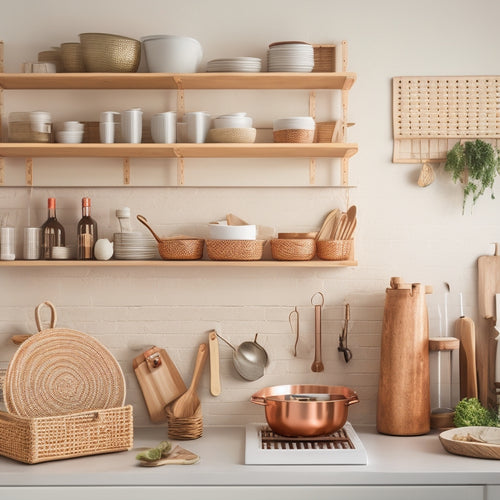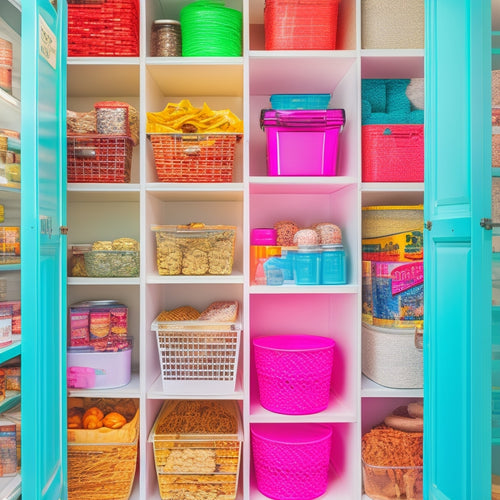
Innovative Designs Shine in Zinc Challenge
Share
The International Zinc Association's Zinc Challenge has yielded an impressive array of innovative designs that showcase the versatility, corrosion resistance, and thin wall capabilities of zinc die casting in various applications. Standout submissions include wearable electronic devices and RFID shielding document holders, demonstrating zinc's potential for sustainable solutions. The challenge highlights the creative concepts of undergraduate students in North American engineering or design colleges, who leveraged zinc's benefits to push boundaries in design. With awards and recognition for the most innovative designs, the Zinc Challenge exemplifies the adaptability of zinc in modern products, and further exploration of its capabilities is likely to uncover even more groundbreaking applications.
Key Takeaways
• The Zinc Challenge showcases innovative designs that highlight zinc's benefits, such as corrosion resistance and thin wall capabilities.
• Standout submissions include wearable electronic devices and RFID shielding document holders, demonstrating zinc's versatility in various industries.
• The competition awards three $3,000 prizes to winning student/team and faculty advisor combinations, based on judging criteria that evaluate innovative design solutions.
• Featured design entries push boundaries with zinc's benefits, such as corrosion resistance and superior finishing, to create novel solutions that promote safety and sustainability.
• Zinc's adaptability sparks design creativity, enabling sustainable manufacturing processes with reduced environmental impact in industries like commercial kitchens and secure storage solutions.
Student Design Competition Guidelines
To participate in the Zinc Challenge, undergraduate students in North American engineering or design colleges must adhere to the outlined guidelines. These guidelines include submitting a thoroughly completed entry form, obtaining faculty endorsement, and providing a detailed design submission that highlights the benefits of zinc die casting.
The submission process requires students to access and complete the entry form, justifying the use of zinc and demonstrating an understanding of its die-casting process. Eligibility requirements dictate that students must be enrolled in a North American engineering or design college, with faculty endorsement mandatory for each design submission.
Design rules stipulate that submissions must be in a single Adobe .pdf file, with a parts list and unique features description.
Innovative Zinc Applications on Display
Among the standout submissions in the Zinc Challenge are innovative applications that showcase zinc's versatility. These include wearable electronic devices, RFID shielding capable document holders, and glass support brackets. These applications highlight zinc's corrosion resistance and thin wall capabilities. These creative concepts demonstrate zinc's potential in providing sustainable solutions for various industries.
The wearable electronic device leverages zinc's high strength-to-weight ratio, making it an ideal material for compact and durable designs. Meanwhile, the RFID shielding document holder exemplifies zinc's ability to efficiently block electromagnetic interference, ensuring secure data storage.
Awards and Judging Criteria
Three $3,000 awards will be presented to the winning student/team and faculty advisor combinations, with the judging criteria based on the thoroughness of the questionnaire and the innovative solution to a design problem.
The judging criteria will critically evaluate the completeness of the questionnaire, which demonstrates the entrant's understanding of zinc die casting, recyclability, and sustainability.
The selection process involves a thorough review of design entries by the International Zinc Association (IZA) and external experts.
The award distribution will recognize the winning entries, with the student/team and faculty advisor sharing the prize.
The recognition criteria will emphasize the innovative use of zinc in design solutions, ensuring that safety and sustainability are integral to the winning designs.
Unique Design Entries Featured
Showcasing innovative applications of zinc, the featured design entries highlight the versatility of this sustainable material in various industries, from wearable electronics to commercial kitchen products.
The Wearable Electronic Device by Sidona Bradley and Kiersten Muechinger, for instance, demonstrates zinc's potential in creating stylish and functional accessories.
Meanwhile, the RFID Shielding Capable Document Holder by Brooke Harrington and Hannah Altshuler-Hansen exemplifies creative concepts that address specific design challenges.
These unique design entries serve as design inspiration, pushing the boundaries of what is possible with zinc. By incorporating zinc's benefits, such as corrosion resistance and superior surface finishing, these designs showcase the material's potential to revolutionize various industries while promoting safety and sustainability.
Zinc's Versatility in Modern Products
Numerous modern products, from kitchen utensils to high-tech gadgets, owe their durability and functionality to zinc's remarkable versatility. This metal's unique properties enable sustainable manufacturing processes, reducing environmental impact while ensuring high-quality production.
Zinc's adaptability also sparks design creativity, allowing innovators to craft novel solutions that meet specific needs. For instance, zinc's corrosion resistance makes it an ideal material for commercial kitchen products, such as the Ulfberht Knife and Save-A-Shot product. Additionally, its shielding capabilities enable the development of secure storage solutions, like RFID shielding document holders.
Frequently Asked Questions
Can International Students Participate in the Zinc Challenge?
'A multitude of international students may be keen to participate, but unfortunately, the Zinc Challenge is exclusively open to undergraduate students in North American engineering or design colleges, making visa requirements and language barriers insurmountable hurdles for international entrants.'
Are There Any Specific Design Themes or Categories to Focus On?
When approaching design submissions, consider focusing on themes that showcase zinc's unique properties, such as Sustainable Aesthetics and Functional Minimalism, to effectively highlight the material's benefits in innovative applications while ensuring safety and recyclability.
Can I Submit Multiple Design Entries for the Competition?
In submitting multiple design entries, students enjoy design freedom, but must carefully craft an entry strategy to maximize chances of winning, ensuring each submission meets eligibility and design rules, and showcasing unique applications of zinc die casting.
Are There Any Specific Software or Tools Required for Design Submission?
For design submission, entrants should utilize design softwares that can create high-quality, detailed designs, and submit them through digital platforms, ensuring compatibility and ease of review, while prioritizing accuracy and precision.
Will the Zinc Challenge Be Held Annually or Is It a One-Time Event?
"Fueling future planning, the Zinc Challenge's event legacy is poised for perpetuation, with organizers hinting at recurring events, ensuring a steady stream of innovative designs and fostering a culture of sustainability and zinc-driven ingenuity."
Related Posts
-

Revolutionize Your Kitchen Storage With These Ideas
You're ready to revolutionize your kitchen storage! Start by incorporating ladder-accessible shelves and utilizing cl...
-

Community Engagement: Learning Through Professions
Community engagement is a powerful tool for fostering a deeper understanding of various professions among children. B...
-

Revamp Your Pantry With Dollar Store Hacks
You can transform your pantry from a cluttered disaster zone to a sleek and functional space with just a few trips to...


